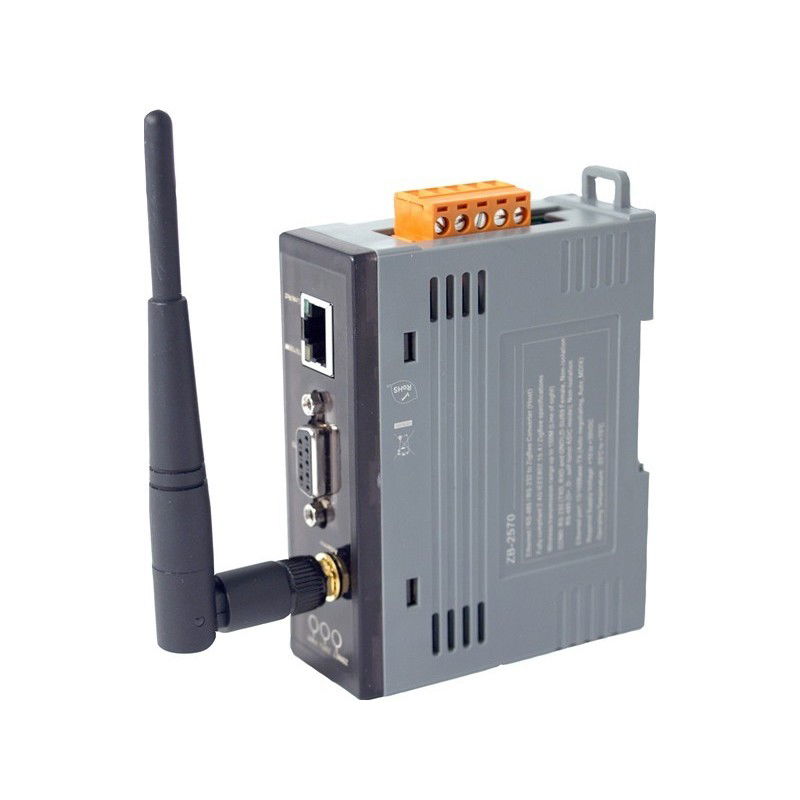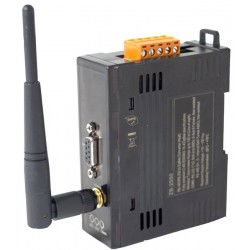



Master, with Ethernet port and 1 kb buffer
Connect serial equipment and input/output modules wirelessly
ZigBee is a self-organizing wireless communication protocol based on the IEEE 802.15.4-2006 standard. It is the ideal choice for most industrial purposes over other wireless technologies (such as WiFi or Bluetooth) because of the emphasis on reliable data connectivity. Areas of application are, for example: industrial control, medical data collection, smoke and burglar alarms and building automation.
With its built-in mesh topology, ZigBee is self-healing and is therefore able to quickly establish alternative connections if individual modules should fail. New modules automatically settle into the ZigBee network and communicate with the nearest two modules. In addition to mesh (lattice), ZigBee can be configured as star or tree, which do not have self-healing properties.
The module has a built-in network port, so that non-wireless equipment can communicate via the ZigBee network. ZigBee networks are a good choice where it is difficult or impossible to route cables - e.g. e.g. on moving equipment. With the ZigBee protocol, you do not get the same data speeds as with WiFi and Bluetooth, but on the other hand you can count on greater stability and security. The ZigBee modules are suitable for use with M485 modules.

Slavemodul med Ethernet til ZIG-MST-E-I

ISM 2.4 GHz Operating Frequency
Fully Compliant with 2.4 G (IEEE802.15.4/ ZigBee Specifications)
Fully Compliant with ZigBee Pro (ZigBee 2007)
Wireless Transmission Range up to 700 m (Default)
Adjustable RF Transmission Output Power
Supports AES-128 Encryption for the Wireless Communication
GUI Configuration Software (Windows Version)
RS-232/RS-485 Interface Supported
Source Identification for the non-address Device Data Transmission
Supports Broadcast Transmission for the Redundancy Transmission Path
Supports Unicast Transmission to Reduce Network Loading
Supports Topology Utility for Network Monitoring and Improvement
DIN-Rail Mountable

